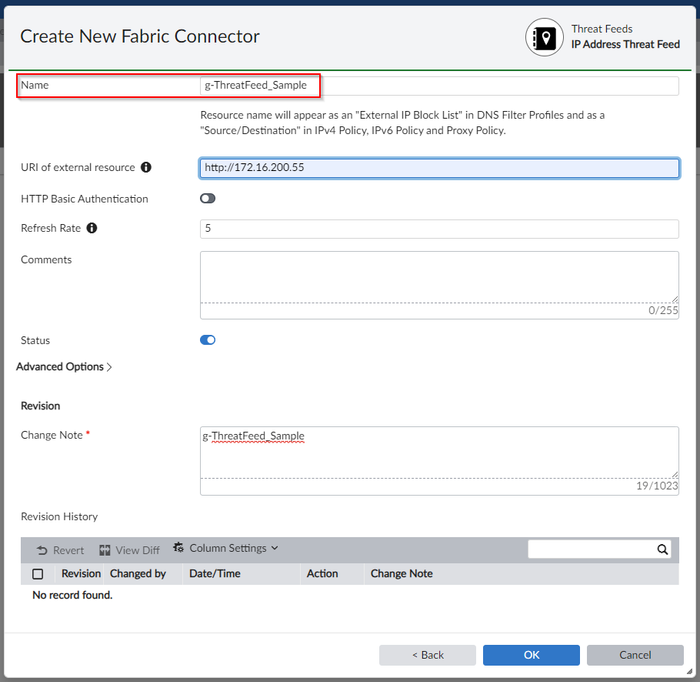- Support Forum
- Knowledge Base
- Customer Service
- Internal Article Nominations
- FortiGate
- FortiClient
- FortiADC
- FortiAIOps
- FortiAnalyzer
- FortiAP
- FortiAuthenticator
- FortiBridge
- FortiCache
- FortiCare Services
- FortiCarrier
- FortiCASB
- FortiConverter
- FortiCNP
- FortiDAST
- FortiData
- FortiDDoS
- FortiDB
- FortiDNS
- FortiDLP
- FortiDeceptor
- FortiDevice
- FortiDevSec
- FortiDirector
- FortiEdgeCloud
- FortiEDR
- FortiEndpoint
- FortiExtender
- FortiGate Cloud
- FortiGuard
- FortiGuest
- FortiHypervisor
- FortiInsight
- FortiIsolator
- FortiMail
- FortiManager
- FortiMonitor
- FortiNAC
- FortiNAC-F
- FortiNDR (on-premise)
- FortiNDRCloud
- FortiPAM
- FortiPhish
- FortiPortal
- FortiPresence
- FortiProxy
- FortiRecon
- FortiRecorder
- FortiSRA
- FortiSandbox
- FortiSASE
- FortiSASE Sovereign
- FortiScan
- FortiSIEM
- FortiSOAR
- FortiSwitch
- FortiTester
- FortiToken
- FortiVoice
- FortiWAN
- FortiWeb
- FortiAppSec Cloud
- Lacework
- Wireless Controller
- RMA Information and Announcements
- FortiCloud Products
- ZTNA
- 4D Documents
- Customer Service
- Community Groups
- Blogs
- Fortinet Community
- Knowledge Base
- FortiManager
- Technical Tip: Create Threat Feed Connector in Glo...
- Subscribe to RSS Feed
- Mark as New
- Mark as Read
- Bookmark
- Subscribe
- Printer Friendly Page
- Report Inappropriate Content
Description
This article describes how to create a threat feed connector from FortiManager in the Global VDOM in FortiGate.
Scope
FortiManager v7.0.10 and above, FortiGate with VDOMs enabled.
Solution
Using Threat Feeds in FortiGate's Multi-VDOM Mode.
When turning on multi-VDOM mode in FortiGate, it is possible to set up threat feeds either globally or for specific VDOMs. Global threat feeds are available to be used in all VDOMs but cannot be edited within a specific VDOM. Moreover, external resources defined in global threat feeds are updated via the management VDOM (root VDOM by default). Therefore, by using globally defined threat feeds, VDOMs do not need to be able to reach the external resources to update them.
In FortiManager, threat feeds are in the Policy & Objects section. When creating a threat feed in FortiManager, it will be pushed to FortiGate when installing the Policy Package to the specified VDOM.
Any threat feed starting with 'g-' will be a global threat feed and can be utilized across various VDOMs on FortiGate. It is not tied to specific VDOM/policy, and even if all policies using the global threat feed are removed, the threat feed will still be available under the Global VDOM.
To Create the Threat Feed in FortiManager:
Log in to FortiManager -> choose Fabric View Pane -> Connectors -> Create New -> Scroll down to threat feeds.
The name should start with a g-:
Threat feed connectors can be created under Policy & Objects -> Security Fabric -> Thread Feeds (Security Fabric and Threat Feeds have to be enabled first under Tools -> Feature Visibility).
After being created, use it in a policy (any VDOM):
After the policy was pushed to the root VDOM, the threat feed was created in Global and Root VDOMs:
In case the threat feed connectors were created directly at the FortiGate, they could be imported in FortiManager to be used under 'Policy & Objects' by executing the following tasks:
- Run a 'Retrieve Config'.
- Run an 'Import Configuration'.
Alternatively, the threat feed connectors can be imported by creating a CLI script (using the threat feed connectors CLI configuration from the FortiGate) and running it on 'Policy Package or ADOM Database' as shown below:
After that, the threat feed connectors will be available under Policy & Objects -> Security Fabric -> Threat Feeds and also under Fabric View.
Related documents:
- FortiOS 7.6.4 Administration Guide - Configuring a threat feed
- Technical Tip: Behaviour of the Per-VDOM Threat Feed Connector in FortiGate HA VDOM partition setup
- Technical Tip: Types of External Threat Feed and their locations in the GUI
- Technical Tip: External threat list (threat feed) is not working (connector is showing down)
- Troubleshooting Tip: External connector threat feed status is in the 'Unavailable' connection status
- Technical Tip: Use an external connector (IP Address Threat Feed) in local-in-policy
The Fortinet Security Fabric brings together the concepts of convergence and consolidation to provide comprehensive cybersecurity protection for all users, devices, and applications and across all network edges.
Copyright 2025 Fortinet, Inc. All Rights Reserved.






